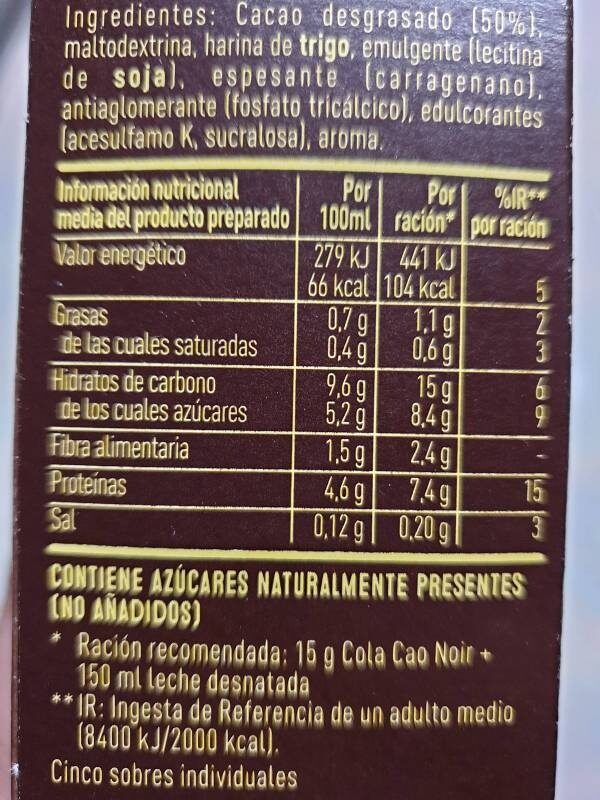Cola Cao Noir
This product page is not complete. You can help to complete it by editing it and adding more data from the photos we have, or by taking more photos using the app for Android or iPhone/iPad. Thank you!
×
Barra-kodea: 8410014464927 (EAN / EAN-13)
Markak: Cola Cao
Kategoriak: en:Beverages, en:Breakfasts, en:Cocoa and its products, en:Cocoa and chocolate powders, en:Instant beverages, en:Cocoa powders, en:Chocolate powders
Etiketak, ziurtagiriak, sariak: No added sugar
Saltzen diren herrialdeak: Espainia
Matching with your preferences
Ingurumena
Carbon footprint
Ontziratzea
Transportation
Report a problem
Datuen iturria
Product added on by elcoco
Last edit of product page on by 5m4u9.
Produktuaren orria -gatik editatua elcoco.9dfcdcb2f075ae88fdee0c4602670da8, inf, jordibrus, kiliweb, roboto-app, thaialagata, yuka.SGJnS0VLRUR1TlFIdVBJazEwN3g5WU4vMnNTWmRuNitBTWhKSUE9PQ.
If the data is incomplete or incorrect, you can complete or correct it by editing this page.








